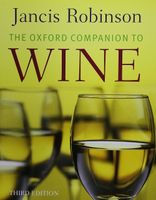Advertisement
Cultured versus ambient yeasts
Published 2006
Ecology studies have shown that intact grape berries harbour a number of other yeast genera in significant populations. Spread around wineries and vineyards by insects, particularly fruit flies (drosophila), and possibly air currents, the most common genera are Klöckera/Hanseniaspora and Candida, with Pichia, Lachancea (formerly Kluyveromyces), Metschnikowia, Zygosaccharomyces, and Torulaspora usually representing a low proportion. Saccharomyces species are rarely isolated from grape berries unless they are damaged by, for example, disease, birds, insects, or hail. More sensitive to sulfur dioxide, and intolerant of an alcoholic strength much above 5%, these wild yeasts are generally active during the early stages of non-inoculated or ‘spontaneous’ fermentations, those occurring when insufficient or no sulfur dioxide is added to the grape juice or must. Fortunately, there are usually enough Saccharomyces cerevisiae cells present on the surfaces of harvesting, transportation, and winery processing equipment that enter the grape juice or must, so that these latter yeasts continue the fermentation above the unstable alcoholic strength of 5%, depleting the supply of sugar and producing a stable wine. Inoculation with Saccharomyces yeast does not suppress wild yeasts which are naturally present in juices and musts during the early stages of fermentation. Therefore, wine is commonly the result of a mixed microflora, although the impact of wild yeasts on the wine is usually restricted by the inoculated yeast. These populations are believed to stabilize with a particular mixture of yeasts suitable for wine fermentation, so that ambient yeast, generally a mixture of yeast genera and species, have in the past been much more commonly used than cultured yeast in the traditional wine regions of Europe. The concept of ‘château’ or resident/indigenous populations of ambient yeast which promote the particular character of an estate wine is controversial among wine scientists. See also microbial terroir.


